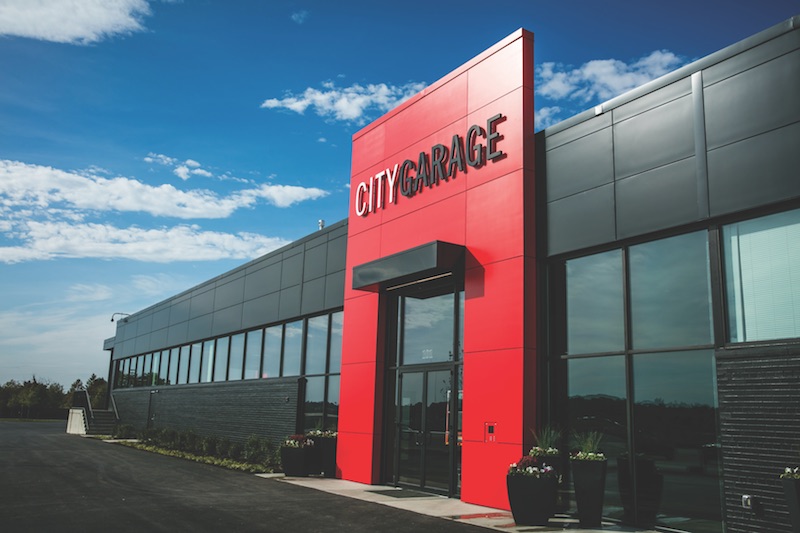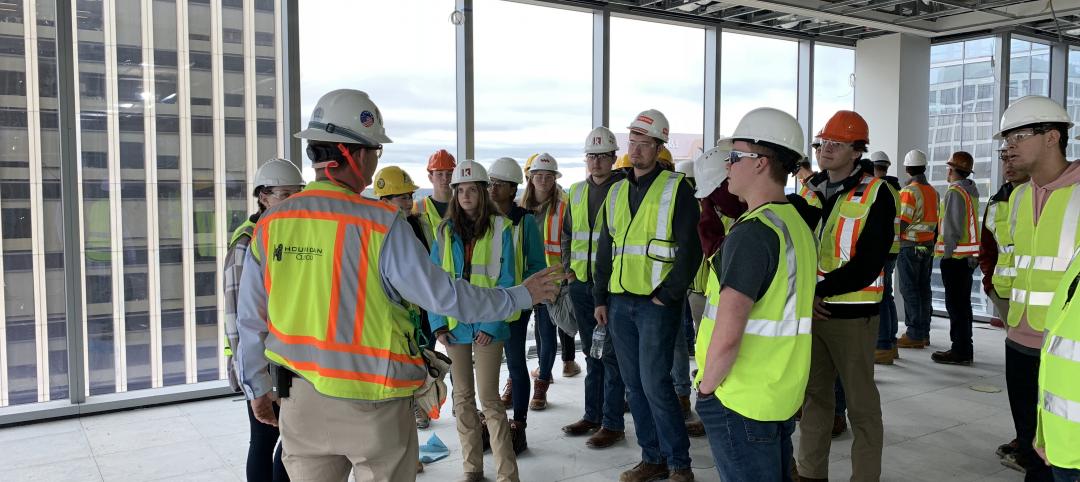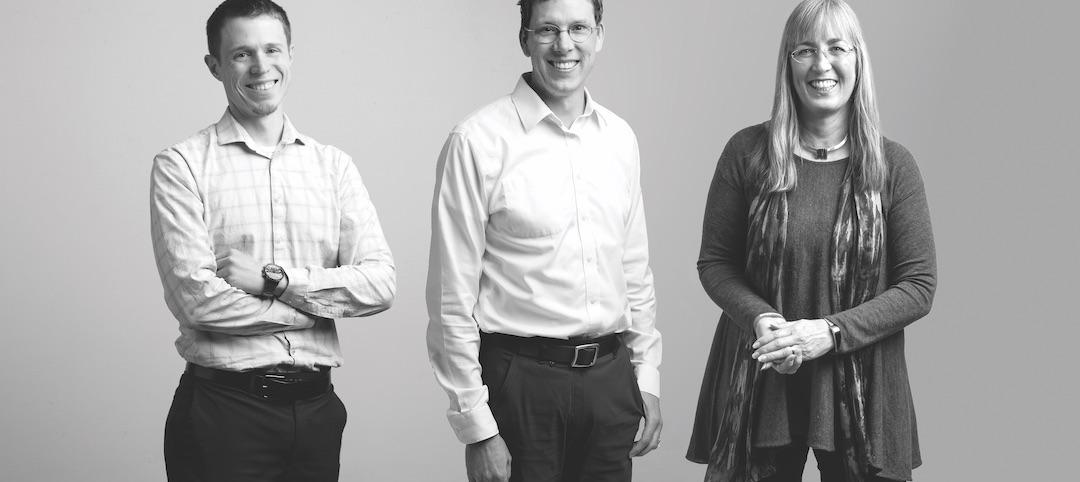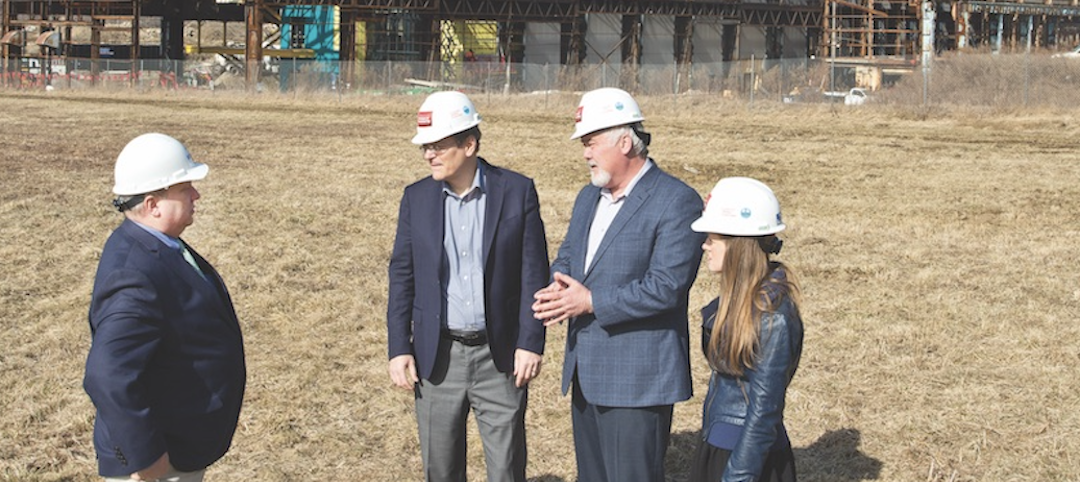Kevin Plank, the feisty Founder and CEO of sports apparel giant Under Armour, has two ambitious goals: to grow his company into a $10 billion brand, which would be more than double its $4.8 billion revenue in 2016, and to turn Baltimore, Under Armour’s home for nearly 20 years, into “the coolest city in America.”
Those objectives have more in common than one might think. The 44-year-old Plank plans to build a 3.9-million-sf headquarters on a 58-acre campus within Port Covington, a post-industrial area along the Patapsco River in South Baltimore. Under Armour acquired that property from Sagamore Development, Plank’s real estate development company, which is the master planner and builder of Port Covington’s $5.5 billion waterfront redevelopment, one of the biggest commercial projects in the country.
When its five phases are completed over the next 25 years, Port Covington will comprise 18 million sf spread over 235 acres that take up 45 city blocks. Of that total, Sagamore will use 177 acres to build 14.1 million sf of offices, housing, incubators, light manufacturing, retail and restaurants, civic space, and entertainment venues.
This project—designed by David Manfredi, FAIA, LEED AP, Co-founder of the Boston firm Elkus Manfredi Architects—would dwarf Baltimore’s popular Inner Harbor, which draws 14 million visitors annually. Port Covington would have three access points, including Interstate 95, over which 42 million cars travel annually.
“Kevin’s focus is 100% on Under Armour,” says Thomas Geddes, CEO of Plank Industries, Under Armour’s holding company. “But he’s also a citizen of Baltimore, and he saw an opportunity to align his interests and the interests of the company with those of the city.”
Geddes says Under Armour’s growth, in and of itself, is “extremely valuable to the city,” and that the overall impact of the Port Covington redevelopment would be “job creation and increasing the tax base.” Once completed, Port Covington is projected to create up to 26,500 permanent jobs and $4.3 billion in annual economic impact.
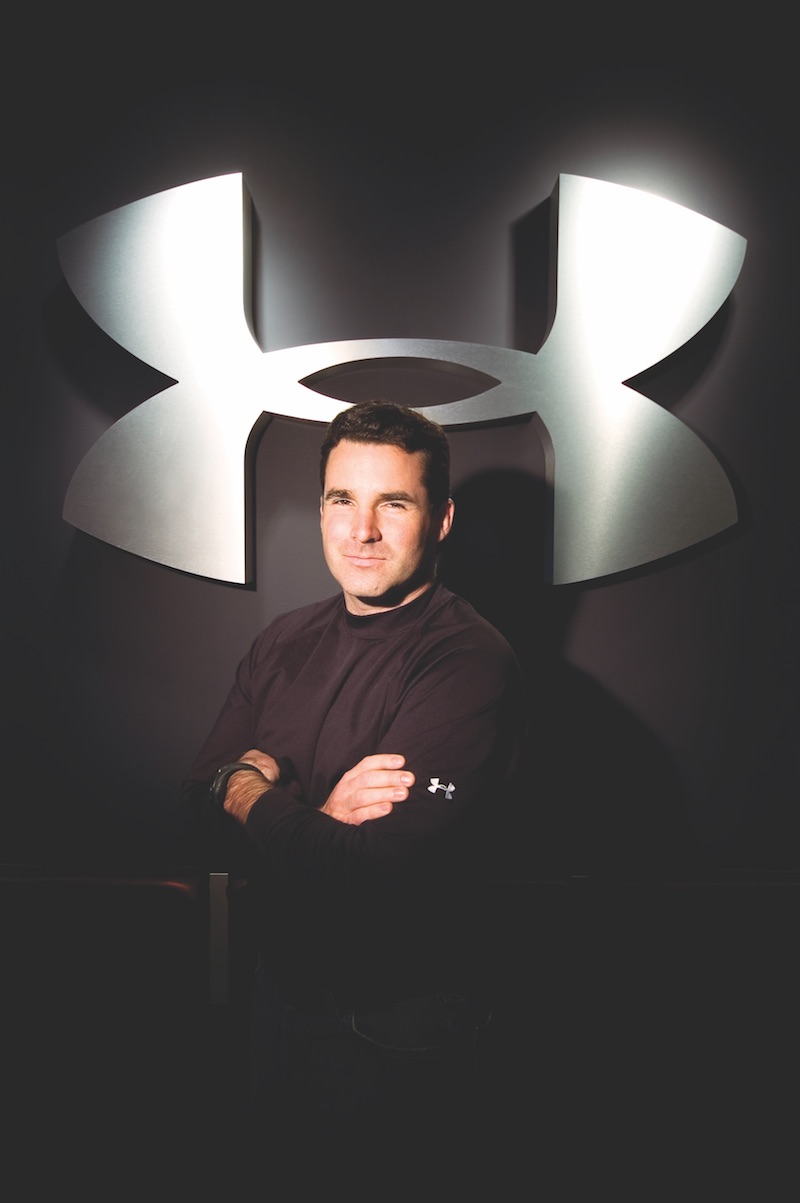 Kevin Plank has built Under Armour into a $4.8 billion operation. Now, Plank, 44, is trying to help rebuild Baltimore, where he moved his business from Washington, D.C., nearly 20 years ago. Plank’s Port Covington project is one of the most ambitious redevelopments in the U.S. Plank has placed workforce development and job creation at the center of this 18 million-sf project. Wikimedia Commons (Dcavalli)
Kevin Plank has built Under Armour into a $4.8 billion operation. Now, Plank, 44, is trying to help rebuild Baltimore, where he moved his business from Washington, D.C., nearly 20 years ago. Plank’s Port Covington project is one of the most ambitious redevelopments in the U.S. Plank has placed workforce development and job creation at the center of this 18 million-sf project. Wikimedia Commons (Dcavalli)
‘Baltimore’s Bruce Wayne’
Plank’s efforts to revitalize Charm City have earned him the nickname “Baltimore’s Bruce Wayne.” He first approached Under Armour’s board of directors about his expansion plans in 2012. Pulling off a project the magnitude of Port Covington would place him in the same billionaire, urban white knight echelons as Quicken Loans’ Founder Dan Gilbert, whose Bedrock Real Estate Services is helping to revive Detroit, and Zappo’s Founder Tony Hsieh, who committed $350 million to turn downtown Las Vegas into an entrepreneurial mecca (albeit with very little to show for it so far).
Port Covington is still mostly in the permitting and capitalization stages, says Geddes. But this project is definitely moving forward. Last September, Baltimore’s City Council approved a $660 million tax-increment financing package, the largest in the city’s history, with $535 million in proceeds from bond sales earmarked for Port Covington’s infrastructure.
Geddes says Kevin Plank is asking state and federal sources to pony up $574 million. Sagamore is kicking in $328 million. But this project flies only if Sagamore can drum up another $4 billion or so from private investors.
Last October, Plank gave the keynote address at the International Council of Shopping Centers’ ReCon convention in New York, where Sagamore Development took a 2,200-sf booth to get Port Covington on investors’ radar screens. The company will exhibit at the ReCon event this month in Las Vegas.
“So far, investor response has been incredible,” says Marc Weller, Sagamore Development’s President.
While infrastructure for Phase I of Port Covington won’t get started until the third quarter of 2018, and vertical construction won’t begin until a year later, some of this project’s foundational blocks are already in place.
After Plank got the green light from his board, Sagamore Development quietly started purchasing property at Port Covington. The 27 structures on the land it bought include a closed Sam’s Club, which Under Armour converted to office space for more than 500 of its employees.
That building is the first piece of what eventually will be its new headquarters campus.
Sagamore Spirits, a whiskey distillery and two-story restaurant, officially opened on April 20. This 49,000-sf facility gets its water from a stream running through Sagamore Farms, a 426-acre horse-breeding ranch in Glyndon, Md., that Kevin Plank purchased in 2007.
A bike path that connects Port Covington to South Baltimore will be completed this summer, says Weller. The redevelopment’s design calls for at least 40 acres of parks, trails, and open spaces.
 Kevin Plank’s vision for a new Baltimore starts with the waterfront redevelopment of Port Covington, a 25-year, $5.5 billion project that encompasses 235 acres and 18 million sf of new building space. Plank’s other local investments include a new luxury hotel, whiskey distillery, and the city’s water taxi. Port Covington’s Building Team includes Elkus Manfredi Architects (master plan architect), STV Inc. (infrastructure engineer), JLL (capital markets), and Clark Construction and Whiting-Turner (pre-construction). Sagamore Development.
Kevin Plank’s vision for a new Baltimore starts with the waterfront redevelopment of Port Covington, a 25-year, $5.5 billion project that encompasses 235 acres and 18 million sf of new building space. Plank’s other local investments include a new luxury hotel, whiskey distillery, and the city’s water taxi. Port Covington’s Building Team includes Elkus Manfredi Architects (master plan architect), STV Inc. (infrastructure engineer), JLL (capital markets), and Clark Construction and Whiting-Turner (pre-construction). Sagamore Development.
Focusing on startups and training
Last year, Under Armour Lighthouse, a manufacturing and research center, opened inside City Garage, a former bus garage that Under Armour transformed into a 133,000-sf incubator hub that leases space to startups. City Garage, which opened in 2015, “is the first flag we planted in Port Covington,” says Weller, and symbolizes the importance that Plank places on encouraging innovation.
“If we can build a place that has a culture around entrepreneurship, we can give a boost to Baltimore city at a time when it is really needed,” says Geddes. Plank, through his Sagamore Ventures company, has invested between $10 million and $12 million in several startups leasing space in City Garage.
City Garage includes The Foundery, a year-old maker space with 3D printers, CNC equipment, woodworking tools, and other machines for working with metals, wood, textiles, plastic, and paints and coatings. There, Sagamore Development, in collaboration with the Center for Urban Families, runs its Manufacturing Bootcamp, a six-week program that teaches participants how to use heavy-duty tools. The program’s first eight participants all got job offers, and 16 more men and women recently completed training there.
Geddes doesn’t discount the possibility of multiple training centers opening as Port Covington builds out.
Supporting the broader community
Aside from Port Covington, Plank has been leaving his investment fingerprints all over Baltimore. At Fells Point, just east of Inner Harbor, he spent $60 million to convert the 103-year-old Rec Pier into the 128-unit Pendry Hotel. Led by local interior designer Patrick Sutton, the hotel opened on March 21 and is managed by Montage Hotels & Resorts.
Last year, Sagamore Ventures acquired Harbor Boating, which operates Baltimore’s Water Taxi service. Maritime Applied Physics, a Brooklyn, Md., manufacturer, is building 55-foot-long boats for the taxi, which Geddes estimates will have between four and six vessels in the water by year’s end. More stops could be added, too. Plank sees the water taxi as both a tourist attraction and a transit connection for his assets in the city.
Weller is confident that Sagamore Development has “already accomplished much of what we need to do to get Port Covington out of the ground.” However, not everyone is in love with Plank’s vision.
Detractors see it as corporate welfare at the expense of economically distressed neighborhoods that have been sadly neglected. Critics also fear Baltimore citizens will be priced out of the housing stock at Port Covington. Baltimore’s previous mayor agreed to waive the city’s 20% affordability requirement on new housing to allow just 10% of the 8,839 housing units at the development to be affordably priced.
Plank is sensitive to negative perceptions, and has made workforce development and community services important components of his strategic agenda to help Baltimore. His organization has committed $100 million to “community benefits” for six neighborhoods that include a new recreation center, $10 million for no-interest business loans, and $25 million for training over five years.
Community outreach is also playing a part in Plank’s next grand plan: the redevelopment of Westport, a 43-acre waterfront property that Plank acquired for $6 million in a January 2015 foreclosure auction. “We’ve considered a number of options,” says Weller, “but we need to go back to the community to see what it wants in terms of logistics and jobs.”
Sagamore Development plans to do that sometime this year, and get the ball rolling on Westport’s development in 2018. “Community engagement has been unique and powerful for us,” says Weller.
Geddes adds a philosophical note. He recently met with Stephen J.K. Walters, author of Boom Towns: Restoring the Urban American Dream, which reconceives cities as “dense accumulations of capital” that make them more or less appealing to people and businesses. While Geddes accepts Walters’s basic premise, he also recognizes that just attracting wealth to cities doesn’t automatically raise all boats, and can leave some people in turbulent seas grappling for life rafts.
“You have to go out and build more boats, which is what we’re doing” with real estate and workforce development programs, says Geddes.
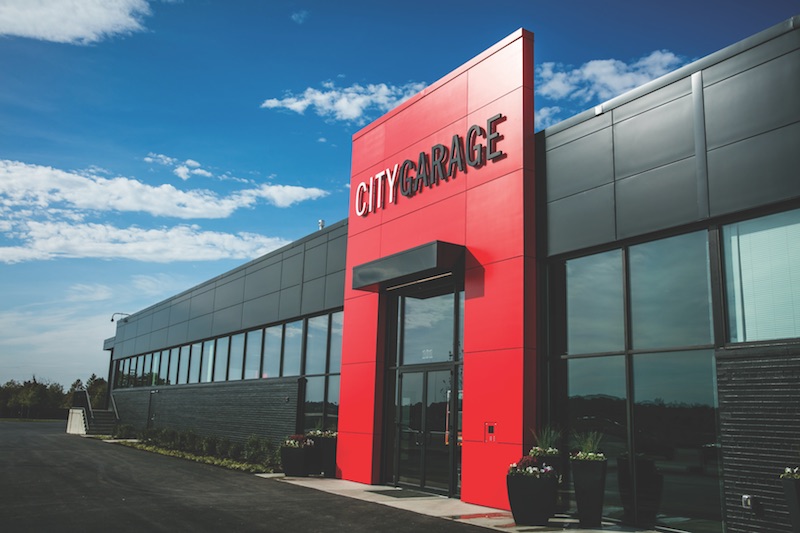 Plank Industries planted its flag at Port Covington in 2015 when it opened City Garage, a 133,000-sf former bus garage that now serves as an incubator and training hub. City Garage symbolizes the importance that Kevin Plank places on workforce development as a component of his strategy to help revitalize Baltimore. Sagamore Development.
Plank Industries planted its flag at Port Covington in 2015 when it opened City Garage, a 133,000-sf former bus garage that now serves as an incubator and training hub. City Garage symbolizes the importance that Kevin Plank places on workforce development as a component of his strategy to help revitalize Baltimore. Sagamore Development.
PORT COVINGTON
Baltimore, Md.
Phase 1 Development Program
Land Use: 45 acres
Total Size: 3,360,800 sf
- Residential: (1,111 units) 1,146,000 sf
- Retail: 716,800 sf
- Office: 1,024,000 sf
- Hotel: (630 Rooms) 330,000 sf
- Entertainment/Venue/Cinema: 64,000 sf
- Civic Space: 80,000 sf
Phase 1 deliveries: 2021-2024
Final Build-out Development Program
Land Use: 177 acres
Total Size: 14,100,000 sf
- Residential: (8,839 units) 8,625,136 sf
- Retail: 1,318,173 sf
- Office: 3,531,870 sf
- Hotel: (630 Rooms) 330,000 sf
- Entertainment/Venue/Cinema: 104,000 sf
- Civic Space: 190,821 sf
- Parks/open space: 40-plus acres
Source: Sagamore Development
Related Stories
Women in Design+Construction | Jan 25, 2024
40 Under 40 Class of 2023 winner Kimberly Dowdell inaugurated as AIA 2024 President
The American Institute of Architects (AIA) has announced the inauguration of Kimberly Dowdell, AIA, NOMAC, NCARB, LEED AP BD+C, Principal and Director of Strategic Relationships at HOK and BD+C 40 Under 40 superstar, as its 100th president.
AEC Innovators | Mar 3, 2023
Meet BD+C's 2023 AEC Innovators
More than ever, AEC firms and their suppliers are wedding innovation with corporate responsibility. How they are addressing climate change usually gets the headlines. But as the following articles in our AEC Innovators package chronicle, companies are attempting to make an impact as well on the integrity of their supply chains, the reduction of construction waste, and answering calls for more affordable housing and homeless shelters. As often as not, these companies are partnering with municipalities and nonprofit interest groups to help guide their production.
AEC Innovators | Feb 28, 2023
Meet the 'urban miner' who is rethinking how we deconstruct and reuse buildings
New Horizon Urban Mining, a demolition firm in the Netherlands, has hitched its business model to construction materials recycling. It's plan: deconstruct buildings and infrastructure and sell the building products for reuse in new construction. New Horizon and its Founder Michel Baars have been named 2023 AEC Innovators by Building Design+Construction editors.
40 Under 40 | Oct 19, 2022
Meet the 40 Under 40 class of 2022
Each year, the editors of Building Design+Construction honor 40 architects engineers, contractors, and real estate developers as BD+C 40 Under 40 awards winners. These AEC professionals are recognized for their career achievements, passion for the AEC profession, involvement with AEC industry organizations, and service to their communities.
Movers+Shapers | Nov 7, 2021
Passage of $1.2 trillion infrastructure bill expected to spur stronger construction activity
AEC firms see federal investment as historic
Movers+Shapers | Apr 30, 2020
College programs help prepare students for careers in the construction industry
Universities with AEC programs hone their curricula and research to prepare students to hit the ground running in the construction industry.
Movers+Shapers | Apr 21, 2020
Management Training: AEC firms bring students into the real world
Students benefit substantively from internships offered by AEC firms.
Movers+Shapers | Apr 17, 2020
Meet the ‘AEC outsiders’ who are helping to push the industry into the new decade
AEC professionals have enough on their plates without becoming specialists in a new skill outside of their wheelhouse.
Movers+Shapers | Apr 15, 2020
Buildings as "open source platforms"
NBBJ’s year-old Design Performance Group helps building teams make smarter choices earlier.
Movers+Shapers | Apr 23, 2019
Steely resolve: Carnegie Mellon University fuels Pittsburgh's post-industrial reinvention
After the steel industry started collapsing in the late 1970s, Pittsburgh has been reinventing itself as a science, medical, and academic hub.


